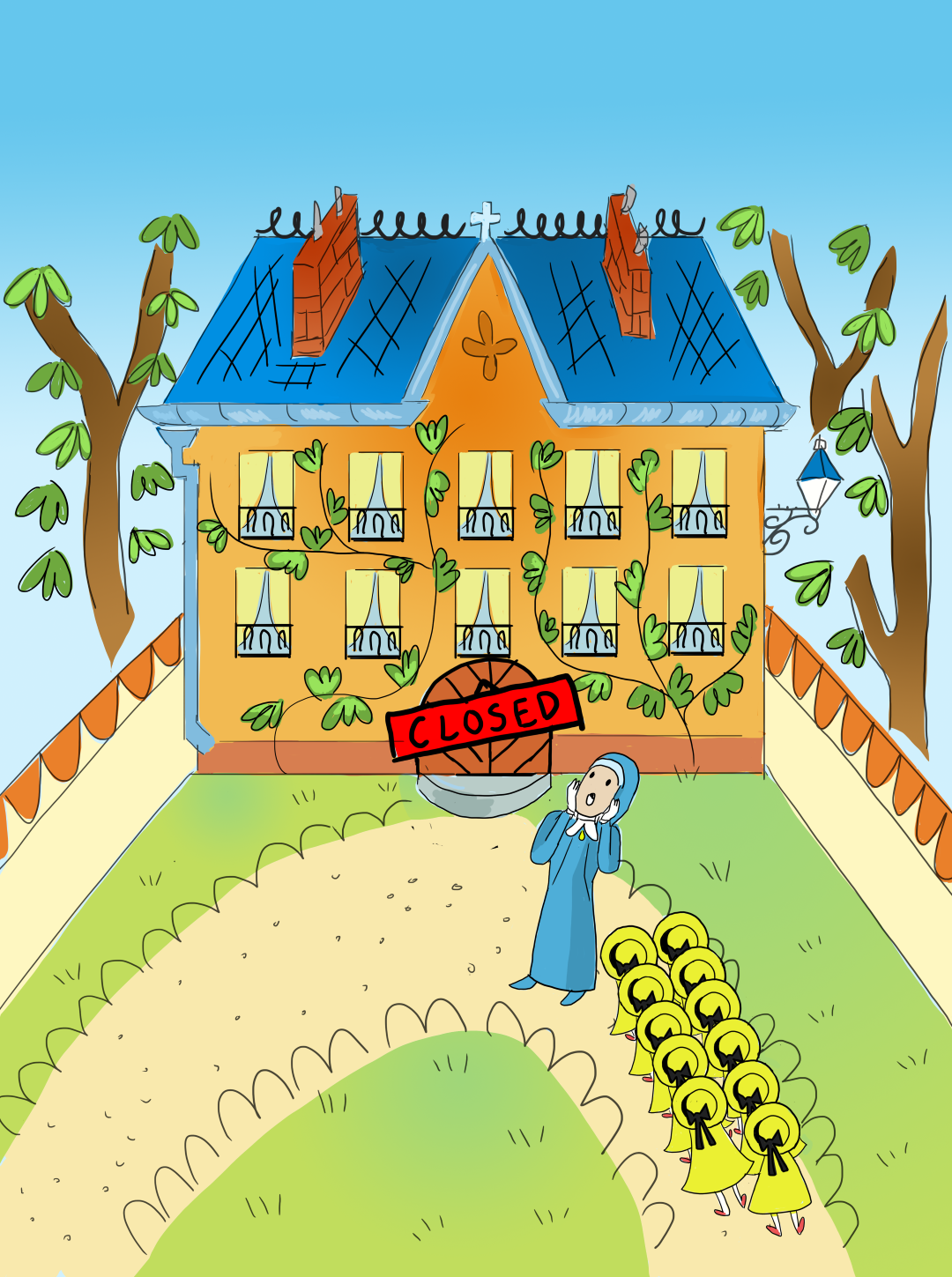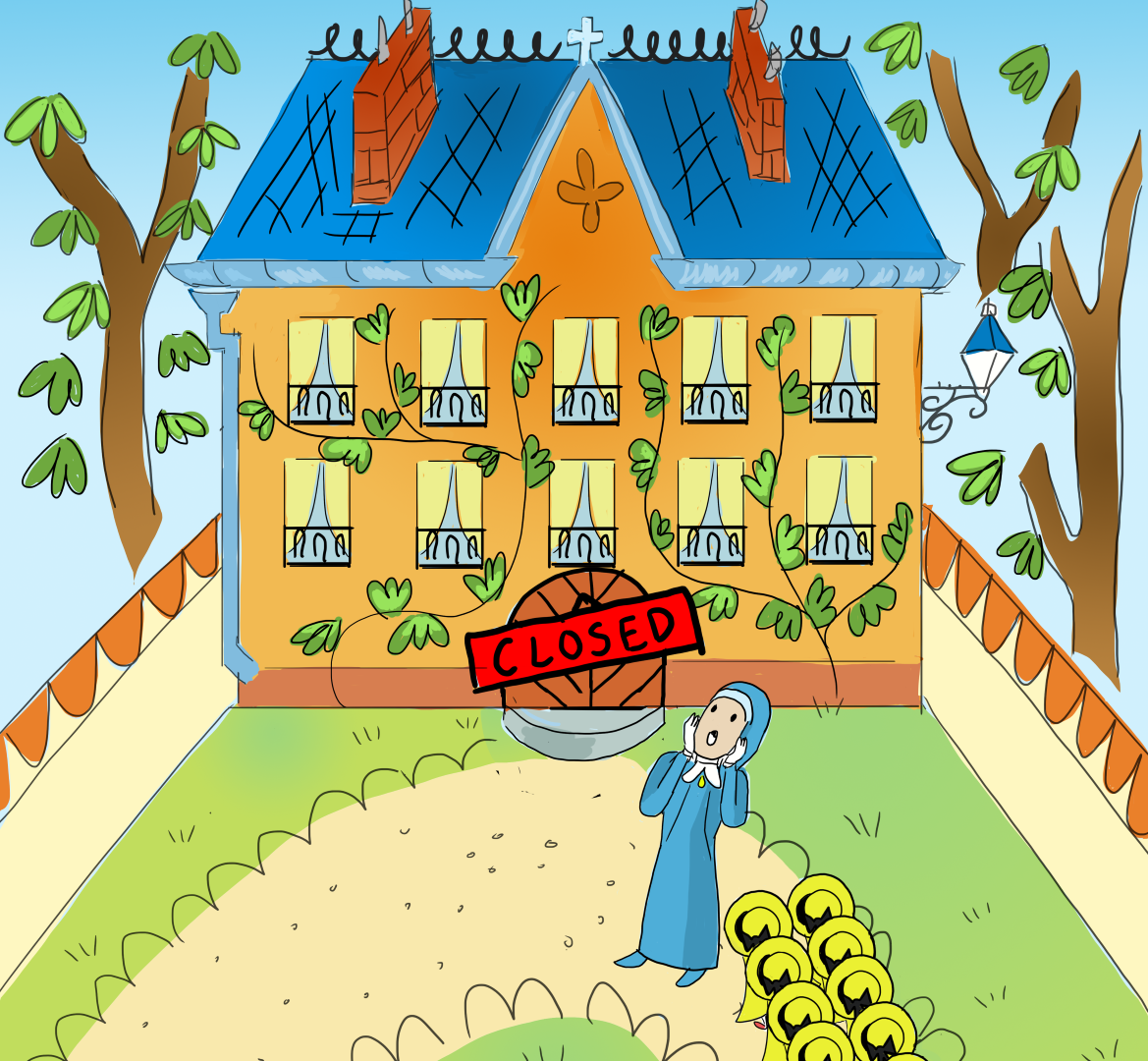
The schoolhouse closure blues
By Luana Ross, Contributor
During the 9 weeks of school closures from March 9 to May 1, there were an estimated 1.15-billion meals that went unserved to needy students.
While school shutdowns are commonly associated with glee for students, the widespread closures caused by COVID-19 have been far from joyful. UNICEF states that more than 1.5-billion schoolchildren across the globe have been impacted by coronavirus-related shutdowns. The children’s charity goes on to highlight that of the students impacted by educational lockdowns, about 463 million were unable to access their education through the alternative methods most do (e.g., internet, radio, etc.); shutting down schools worldwide will clearly have consequences, but have policymakers comprehensively considered the fallout of bringing in-person education to a screeching halt?
THE INITIAL RATIONALE FOR SHUTDOWNS
At the start of the coronavirus pandemic scientists did not have any experience with the disease—but advising the public on how to respond to COVID-19 was necessary. In an effort to provide solutions they relied on data from previous pandemics that seemed similar as a guideline for our current situation. In the previous influenza pandemic scientists referenced, school closures proved to be a key tool in stopping the spread. The paper “Ethics of COVID-19-related school closures” points out that the influenza data that was studied is a poor comparison to coronavirus; children were “highly susceptible and important in community-wide transmission” when it came to the considered strain of influenza, but “children remain remarkably unaffected by COVID-19.” There is still no evidence that children are an essential part of the spreading of coronavirus as well.
The Centers for Disease Control and Prevention clarifies that research is continually showing that transmission of COVID-19 in school settings is “typically lower than […] levels of community transmission when mitigation strategies are in place.” The CDC goes on to explain that transmission among students is “relatively rare,” and that adult-to-adult transmission was the most commonplace type of spread in schools. Other studies mirror this point about infection rates among youth; the research paper “Children are unlikely to have been the primary source of household SARS‐CoV‐2 infections” highlights that in the majority cases they studied where kids had contracted COVID-19 they had been infected by an adult in their household. The CDC also mentions that children that contract coronavirus usually either experience mild symptoms or are asymptomatic. In BC, population data has reflected that fact; from ages 0 to 19, there have been 143,823 cases and four total deaths as of Feb 26 as per the Government of Canada’s stats.
THE SCHOOL CARE CRISIS
One of the most pressing concerns about closures is how schools are a hub for all types of crucial care. One of the most essential forms of aids schools offer is free or cheap food for students who are poor. The previous BC Education Minister Rob Fleming highlighted that about 16,000 families depend on the school meal services offered; the Vancouver School Board is regularly providing hot lunches to around 3,000 students. The US faces similar issues as according to the School Nutrition Association, 22 million of the 31 million students who eat lunches often are totally reliant on the free or reduced-price meals for sustenance. The paper “School Closures During COVID-19: Opportunities for Innovation in Meal Service” estimates that during the 9 weeks of school closures from March 9 to May 1, there were about 1.15-billion meals that went unserved to needy students.
On top of catering to students’ physiological needs, schools also keep their pupils safe through intervention. The article “Addressing the Consequences of School Closure Due to COVID‐19 on Children’s Physical and Mental Well‐Being” published in peer-review journal World Medical & Health Policy puts a spotlight on the fact that in the US teachers “play a critical role in identifying and linking homeless children to services and supports.” Additionally, the paper mentions that teachers often bring attention to cases of child abuse so they may be resolved. A report from Children First Canada raises concerns about the growing child abuse in Canada during COVID-19; the paper outlines that Kids Help Phone has had seen an increase in calls about emotional, physical, and sexual abuse. In an interview with Global News, Sara Austin, founder and CEO of Children First Canada, reminds everyone that “children have been in lockdown for […] months now without access to trusted adults outside of their home.
A well discussed issue during this pandemic is mental health, and the school is yet again a primary source of aid for students who are struggling with problems like depression. In a 2016 article the National Association of School Psychologists mention that schools are crucial in offering mental health services to students—and in some areas like rural areas schools are the only provider of mental health services for students. A 2013 report from the Mental Health Commission—a national Canadian government created non-profit organization that studies mental health—states that as children are in school for the majority of their time, it makes sense that the school has naturally grown into one of the most important venues for offering psychological help to youth. The Children First Canada report also mentions that Statistics Canada data tells us that the main cause of death between 10- to 14-year-olds is suicide, so mental health services cannot be put on the backburner.
THE BARRIERS OF LEARNING ONLINE ARE IMPOSSIBLE FOR SOME
Many of us in post-secondary have had no backbreaking problems transitioning from in-person learning to online as most college and university in-person classes include an online component of some sort. For many elementary and secondary schools that already deal with poor students that rely on their food services, it does not make sense to transition. Forcing online classes will immediately isolate a large percentage of their low socioeconomic students that do not have access to the internet. In the paper “Ethics of COVID-19-related school closures” it is highlighted that children from marginalized groups such as immigrants and racialized minorities will face this barrier more than others. The same paper on ethics goes on about childcare as another bloated issue only worsened by the pandemic. Childcare accessibility in Canada is already limited as the demand and costs are so high—and this is out of reach for those already suffering due to low income.
Lastly, there are some learners that simply cannot have their education put on hold (or online) as it will stunt their necessary development. Children aged 2 to 5 must hit developmental markers during this period otherwise the damage is irreversible. Preschools, daycares, all other pre-elementary school programs for children offer some of the most important education a person learns in their lifetime. As the Wall Street Journal reports, by age 6 a child’s brain is 90 percent developed—and all the things learned during that period are necessary to build the brain. If children cannot play, they cannot learn and develop. There is no online substitute for play. Young children, as previously mentioned, are poor carriers and spreaders of COVID-19. These factors must be considered, and frankly all preschools should be opened immediately globally if we are taking the work of neurologists, psychologists, and developmental biologists (among many others) seriously.
WHAT DID BONNIE HENRY SAY?
BC Education Minister Jennifer Whiteside and Provincial Health Minister Bonnie Henry also highlighted many of the points mentioned in this article in a Feb 4 conference. Henry made a statement on how disruptive the transition away from in-person learning was for the entire school community and also said “the opportunity for students to be in school is so, so important, not just for their education but also for mental, physical and emotional wellness, and it is such an important part of growth and development for our young people.” Both put emphasis on the fact that very low rates of transmission have been seen in schools.
The UN’s statement that the pandemic has caused the most significant interruption to education in history is not to be taken lightly. With all the recent school shutdowns, it feels like that the public and the politicians misunderstand what schools achieve for communities around the world. While school closures are inevitable, the drastic measure cannot be treated as a simple precautionary measure that doesn’t require very extensive research and debate. There are many more essential benefits schools offer like obesity prevention, medical services, and special education. Closing down these hubs of education, emotional development, mental health services, access to technology, food for those in need, and help with homelessness and abuse intervention will create more catastrophic damage than shutting them down can prevent.



